Seekho is a crazy subscription business.
100M+ Downloads • $10M monthly revenue • Zero ads revenue
What is Seekho?
Seekho is a business that shouldn’t work: charging people for content they can get free elsewhere. On the surface, Seekho looks like just another short-form video app. Vertical clips, swipes, quick dopamine hits - the same language Instagram Reels and YouTube Shorts speak. But Seekho’s promise is different: Netflix for education.
That sounds bold, until you open it. Because what you find inside is not professors teaching Python or directors like Christopher Nolan breaking down cinema. Instead, the content feels surprisingly everyday.
‘How to update your Aadhaar card?’.
‘Businesses you can start with ₹50,000’.
‘How to shoot a YouTube video?’.
The topics aren’t glamorous. The creators aren’t celebrities. Many of these videos already exist for free on Instagram or YouTube. And yet, Seekho puts them behind a paywall - and millions of Indians pay.
So the obvious question is: why? Why would someone pay for what they could find free? What is it about the product, the design, the psychology of the user journey that turns free content into a subscription business?
In this edition, I unpack Seekho’s onboarding, positioning, engagement, retention, and quirks - not to glorify or dismiss, but to understand. Behind it lies a bigger story: how Indian users prize convenience and curation in ways Silicon Valley often underestimates.
Where does Seekho fit in?
Seekho isn’t the first app to experiment with “vertical video education.”
Back in 2020, Unacademy launched vertical video first education platform called Graphy, bringing in names like Harsha Bhogle and Viswanathan Anand to teach courses. The inspiration was obvious: MasterClass, but in reels format. High-quality, niche skills. Big personalities. Production polish.
And yet - it didn’t click. The format faded, the product pivoted, and today Graphy is more of a tool for creators to run communities than a destination for learning.
Seekho, however, has found traction. But not by chasing celebrities or premium niches. Instead, it’s done something subtler. If MasterClass is about inspiration, Seekho is about everyday hacks.
I tried placing Seekho in a 2x2 matrix of top businesses in the adjacent sectors
That puts Seekho in an odd but fertile quadrant: edutainment with a paywall. It’s like Blinkist - but instead of compressing books into summaries, Seekho compresses life skills into short clips.
The “Show” Model
Seekho calls itself the Netflix of education—not because of the content, but because of the structure.
On YouTube, anyone can upload. On Seekho, only curated “showrunners” can. Each showrunner is handpicked by the company, given pilot topics (say, how to make a resume or how to apply for a PAN card), and tested. If the pilot draws clicks and completion, the show gets extended. If it doesn’t, it’s cancelled.
This system solves a classic platform problem: quality vs. scale.
Too open, like YouTube, and you drown in noise.
Too restrictive, like a traditional course platform, and you risk stagnation.
Seekho strikes a middle path by betting on a small pool of vetted creators.
The numbers prove it: in 2024, founder Rohit shared that just 12 creators produced most of Seekho’s library. It’s also efficient - fewer creators means easier oversight, fewer quality issues, and stronger brand control.
The creators themselves are incentivized like Netflix studios. They wear Seekho t-shirts, open with a scripted “Seekho exclusive,” and run their shows semi-independently. If they plateau on one category, Seekho nudges them into another. Top creators can reportedly earn up to ₹2 lakhs/month.
But here’s the twist: despite this, creators only capture about 5% of Seekho’s total revenue. Why? Because customer acquisition eats the pie. That leaves Seekho more dependent on subscription volume - very different from YouTube’s ad-share model.
This is why the Netflix comparison holds. Netflix doesn’t open its doors to everyone it partners with select studios, funds their shows, and distributes them under its brand umbrella. Seekho is borrowing that playbook. When you watch a “Seekho show,” it doesn’t feel like one of a million random YouTube tutorials. It feels intentional - like you’re paying for order, not just information.
How Seekho Makes Money?
Every platform eventually answers the same question: who pays, and for what?
For Seekho, the answer is clear. Subscriptions only.
There are no ads, no affiliate links, no brand sponsorships in the background. Every show on Seekho sits behind a paywall. The funnel is simple:
A teaser week for as little as ₹1, locked to autopay.
Then, a subscription of ₹149/month on Android (₹199 on iOS).
Or, for the committed, ₹599/year.
That’s it. No free tier, no ad-supported option.
(PS: The prices seem to have an A/B test across audience and devices hence these shall be taken as references)
It’s a bold stance in a market where YouTube dominates precisely because it is free. Seekho is betting on a very different psychology: people don’t just want free content, they want certainty, curation, and convenience - and they’ll pay for it.
The lack of ads also signals something important: Seekho doesn’t want to be in the attention business. It wants to be in the trust business.
When the only revenue line is subscriptions, you’re in a race against user fatigue: how many months before someone feels they’ve “extracted enough value” and cancels? That’s the paradox of Seekho: the same simplicity that makes its model appealing is also what makes it risky.
How does Seekho position itself?
Most of Seekho’s audience seem to come the old-fashioned way: paid ads. But what those ads say is more interesting than the spend behind them.
When you scan Seekho’s ad library, a pattern emerges. The messaging falls into a handful of buckets:
Authority & FOMO
An authoritative voice educates you about government schemes you might miss. This is classic fear-of-missing-out, packaged as public service.
Aspirational Hustle
The pitch that others are earning online while you are wasting time. Ads frame Seekho as the shortcut to income - whether through YouTube, Instagram, or side-business ideas.
Problem-Specific Triggers
Targeted nudges for people already struggling with something:
“Not getting views on your channel? Here’s how to fix it.”
“Milk production falling? Learn why and what to do.”
Cultural & Spiritual Hooks
Even planetary misalignments get a mention. If you feel stuck, maybe it’s your stars. Seekho positions itself as the platform where you’ll find not just practical fixes, but also broader life guidance.
Everyday Hacks
At the other end of the spectrum: cleaning, organizing, running a household better. Not glamorous, but deeply relatable.
Together, these ads show a clever strategy. Seekho isn’t trying to look like Harvard Online. It’s trying to be the trusted elder sibling who knows a little more than you do - and can save you time, money, or embarrassment.
Onboarding: The One-Rupee Test
Most apps roll out the red carpet when you first sign up - free trials, skip buttons, optional upgrades. Seekho takes the opposite approach. From the very first screen, after you punch in your mobile number, the app asks for money.
Not much - just ₹1. But that tiny request does something powerful: it locks in an autopay mandate. A week later, unless you cancel, you’re billed ₹149.
It’s a risky move. Asking for payment at step zero creates friction. But it also acts as a filter. By paying ₹1, a user signals intent. And by tying payment to autopay, Seekho converts curiosity into commitment.
The onboarding doesn’t leave this to chance. If you back out when UPI asks for ₹199, the app intercepts you with a persuasive video. It reassures you: “Only ₹1 today. Cancel anytime.” That little nudge rescues what could have been a lost customer.
This is smart design. Seekho treats payment failures as moments to educate and persuade.
The rest of the flow is straightforward - trial first, then a monthly plan. But the psychological magic is in that upfront ask. Seekho reframes payment not as a hurdle, but as proof of seriousness.
The Categories of Curiosity
If you want to understand Seekho, don’t just look at its features - look at its categories. Because categories are a mirror of what people really want.
At the top, you’ll find YouTube and Instagram playbooks for growing followers, making videos, and earning money online. Then comes Sarkari Kaam - everything from Aadhaar updates to applying for licenses to discovering government schemes. Surrounding these are courses on part-time income, small businesses, and market opportunities.
Notice the pattern? The categories orbit around three gravitational pulls:
Money – How to earn, save, or build something with low capital.
Fame – How to be seen, grow online, and build a personal brand.
Faith – How to align your life with cultural, spiritual, or astrological guidance.
Strip everything else away, and those are the big levers. Not abstract curiosity, not “learning for learning’s sake.” Seekho knows that in India, most learning is outcome-driven. Pottery isn’t about art - it’s about whether you can sell pots. Astrology isn’t just mysticism - it’s a framework for hope when money or fame feel out of reach.
This is what makes Seekho unique. Its library isn’t structured like a university syllabus. It’s structured like a mirror of aspiration. A catalogue of the small, practical, sometimes quirky ways Indians chase progress.
Browsing Like Netflix, Not YouTube
Click into a Seekho category and the resemblance is clear: it feels more like Netflix than YouTube.
Where YouTube surrounds every video with clutter - titles, descriptions, view counts, comments - Seekho strips all of that away. Each course is represented by a single thumbnail. The thumbnail does all the work: a splash of text, an image, and that’s it. No reviews. No ratings. No “10k people watched this.”
Inside the videos, the format is equally minimal. A creator speaks directly to the camera. Clips are intercut with AI-generated images, animations, and B-roll. Everything auto-plays to the next episode, nudging you into a binge loop.
There are lightweight engagement hooks: a like button, a share option, a bookmark tab. But comments icon is just a private feedback to the creator - not a public forum. There’s no space to argue, rate, or review.
It’s a very conscious choice. Udemy thrives on ratings. YouTube thrives on comments. Even MasterClass gives you long descriptions of each instructor. Seekho, like Netflix, hides the social layer. It replaces community judgment with a controlled, curated experience.
The upside: simplicity and focus.
The downside: isolation. You never quite know what others think of the content. Which means trust rests entirely on the Seekho brand itself.
The app studio playbook
Strip Seekho down and you’ll notice something striking: it’s incredibly simple.
The content isn’t complex. The design isn’t cluttered. The onboarding doesn’t meander. Every piece - from categories to videos to payments - is engineered for low friction. And once Seekho cracked this formula, they didn’t just stop. They scaled the playbook.
Instead of stuffing every possible need into one app, Seekho has spun up an app studio model:
Arivu (knowledge) – Seekho reimagined for Tamil audiences.
Nerchuko (learn) – a Telugu version.
A dedicated English-learning app.
A dedicated learning app for kids
Even an AI chat app—likely an experiment in format.
Each one borrows the same skeleton: short, practical, bingeable content delivered with Netflix-style simplicity. But the skin changes - language, context, and audience.
This is smart for two reasons:
India is not one market. What works in Hindi may flop in Tamil. Separate apps let Seekho localize deeply without diluting the main product.
Distribution beats features. By cloning the model, Seekho multiplies its surface area for user acquisition, while keeping production costs low.
And according to reports, they’re already testing whether this playbook can travel beyond India - into the US and other markets.
Pain points
For all its polish, Seekho isn’t without its frustrations.
The first is philosophical: no free content. Every course sits behind a paywall. For some users, this feels like a dealbreaker - especially in a country where YouTube offers infinite tutorials for free. On forums and reviews, you often see the same complaint: “Why should I pay for what I can get on YouTube?”
Seekho’s answer is simple: curation over chaos. But the trade-off is clear - people who want to “sample before they buy” never get that chance inside the app.
The second pain point is practical: unsubscribing. Setting up autopay is easy - just ₹1 upfront, one click, and you’re in. But cancelling is a maze. You need to tap Profile → More → Settings → My Subscriptions before you even see the option. What started as low friction on the way in becomes high friction on the way out.
This is a classic tension in subscription products. Push too hard on retention mechanics, and you risk crossing into user hostility. It’s the digital equivalent of the hotel that makes check-in seamless but checkout painful.
These aren’t fatal flaws, but they do shape perception. For a brand built on trust and simplicity, hiding unsubscribe buttons can quietly erode both.
The bigger picture
Seekho is, in many ways, deceptively simple. A paywall on everyday tutorials. A handful of creators producing the bulk of content. A distribution engine running on paid ads.
And yet, that simplicity hides something profound. Seekho shows us that in India, people don’t always want “more.” They want clarity, certainty, and curation. They don’t want to sift through hours of YouTube videos. Getting Seekho subscription signals seriousness in life for an individual. That’s the genius here. Seekho hasn’t reinvented education. It has reframed it.
So is Seekho the future of Indian edtech? Or just a cleverly tuned subscription hack? Time will tell.
In the end, Seekho is a mirror of what India’s digital middle class values most: small wins, fast answers, and the feeling of moving forward.
If this essay sparked something for you, consider sharing it with a friend or community that might enjoy it too. I always love hearing different perspectives—feel free to reply here or drop a DM on Twitter/X.
References:
[Entracker] Exclusive: Seekho set to raise $25 Mn, hits $4 Mn monthly revenue (Based on information from trusted sources, current revenue stands at $10M. If there are any discrepancies, the figures will be updated accordingly with supporting documentation.)
[Elevation Capital] Seekho: Building the ‘Netflix for Learning’ | Day One | Elevation Capital
[Waterbridge Ventures] Making Learning Addictive with Seekho, India’s First Edutainment OTT ft Rohit Choudhary | TOI S04E07





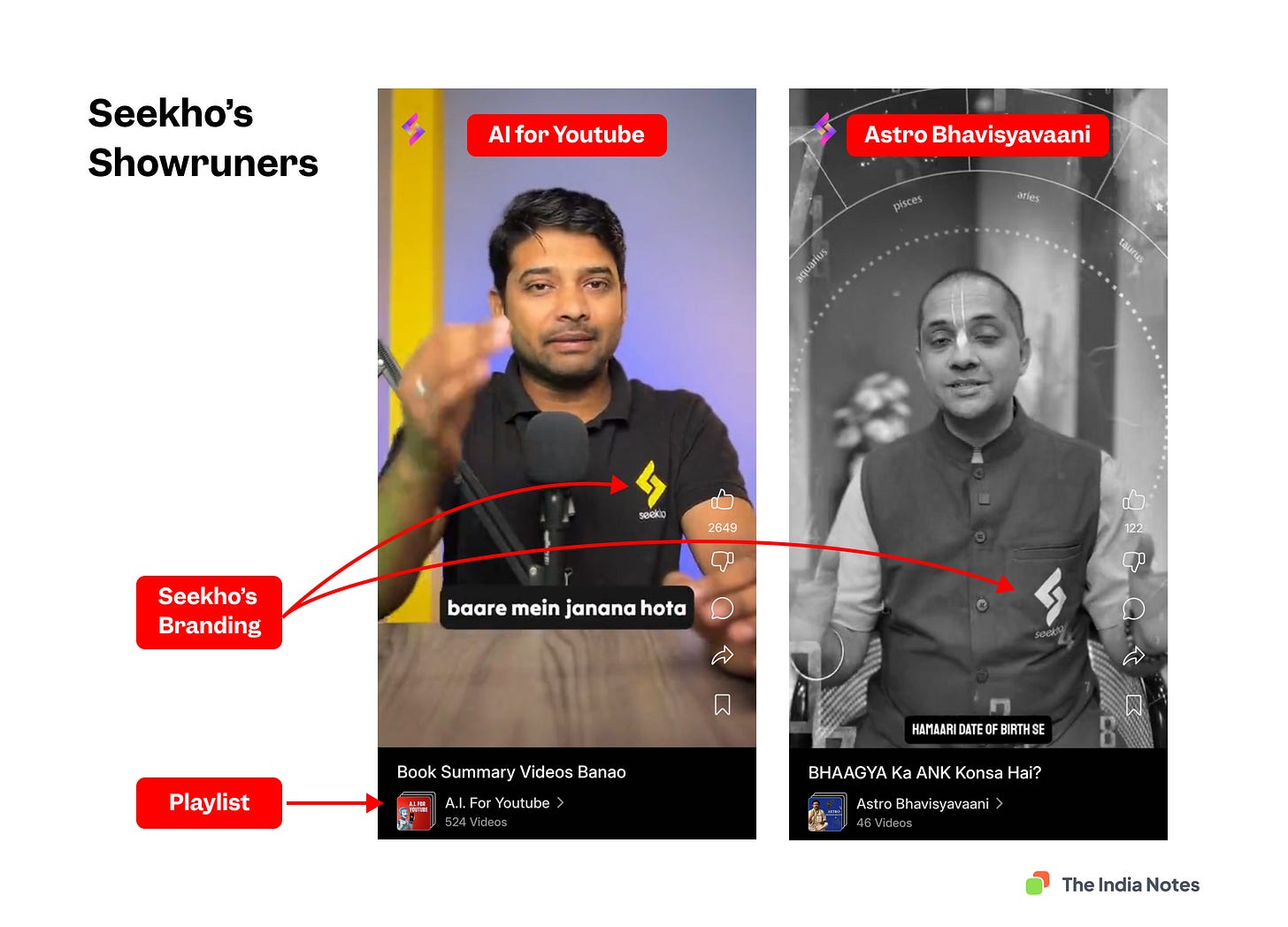
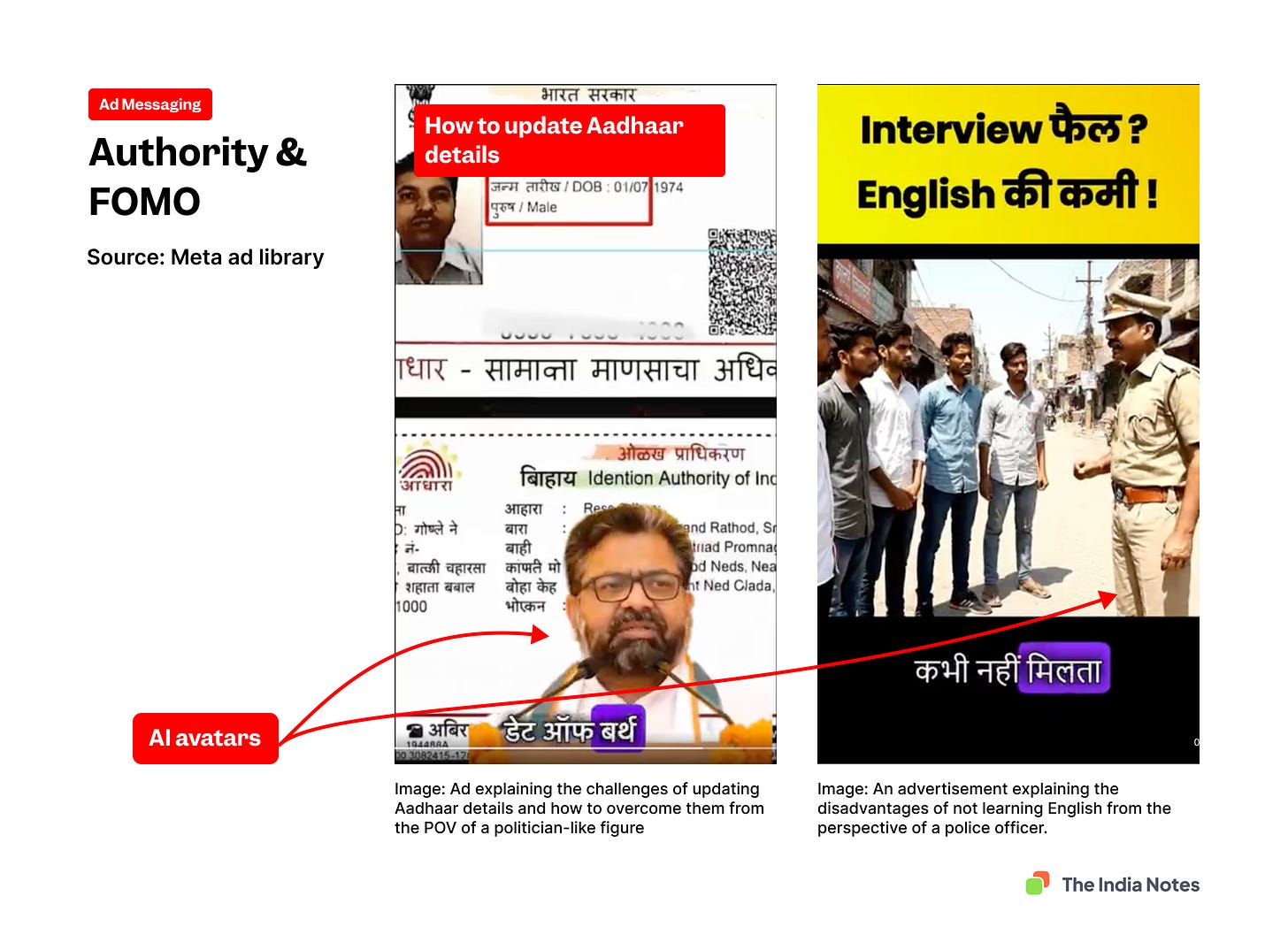
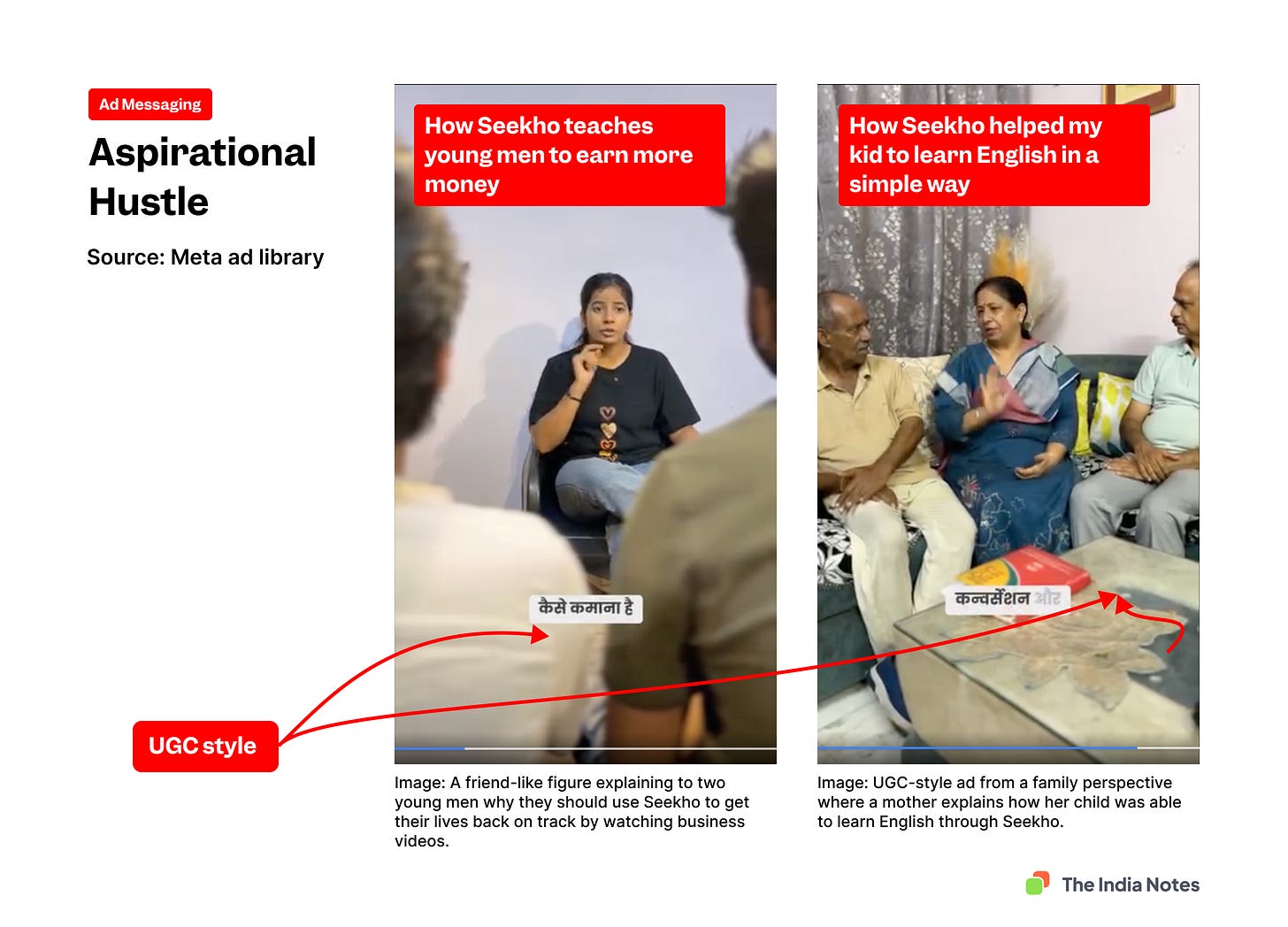
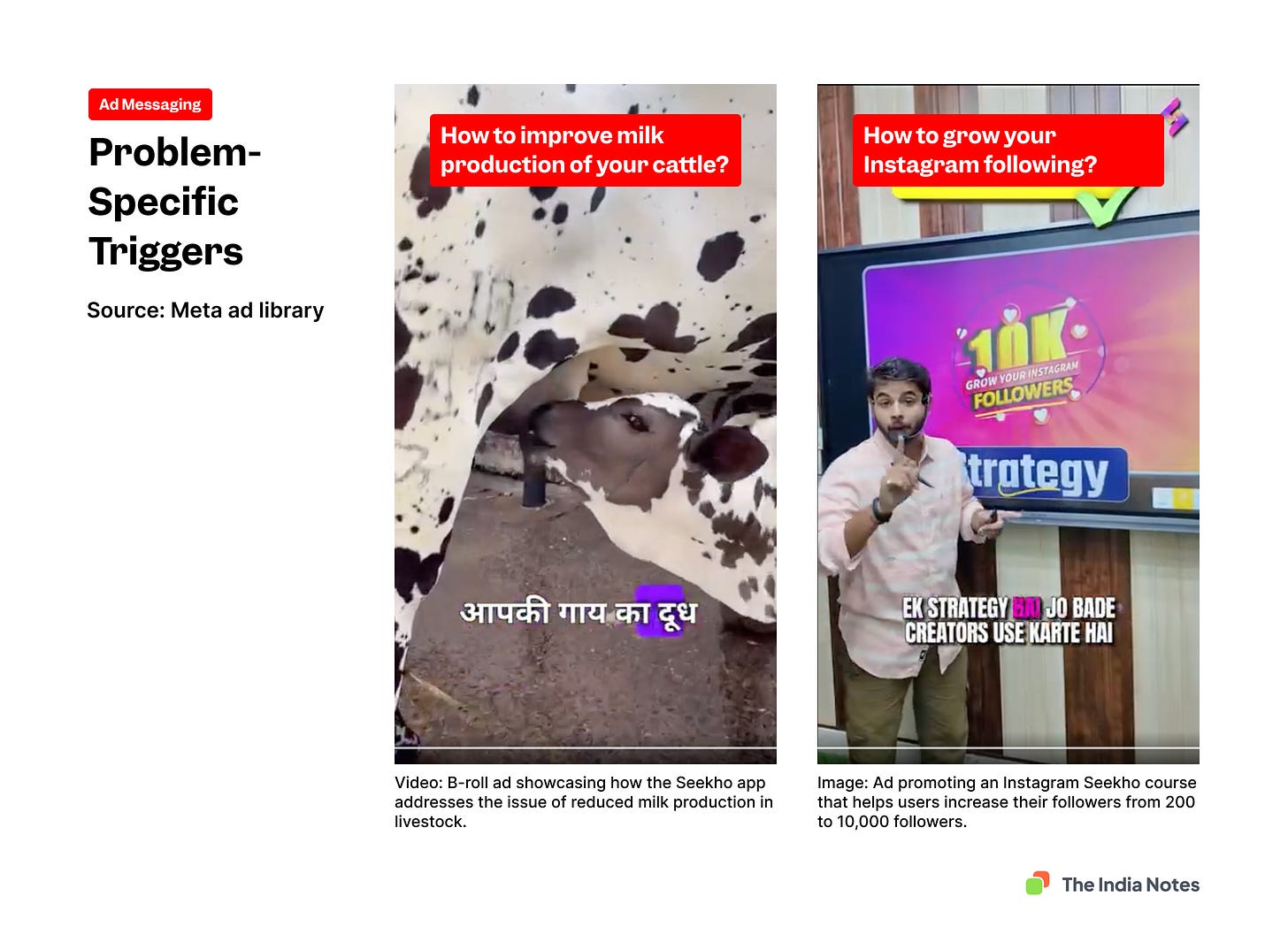
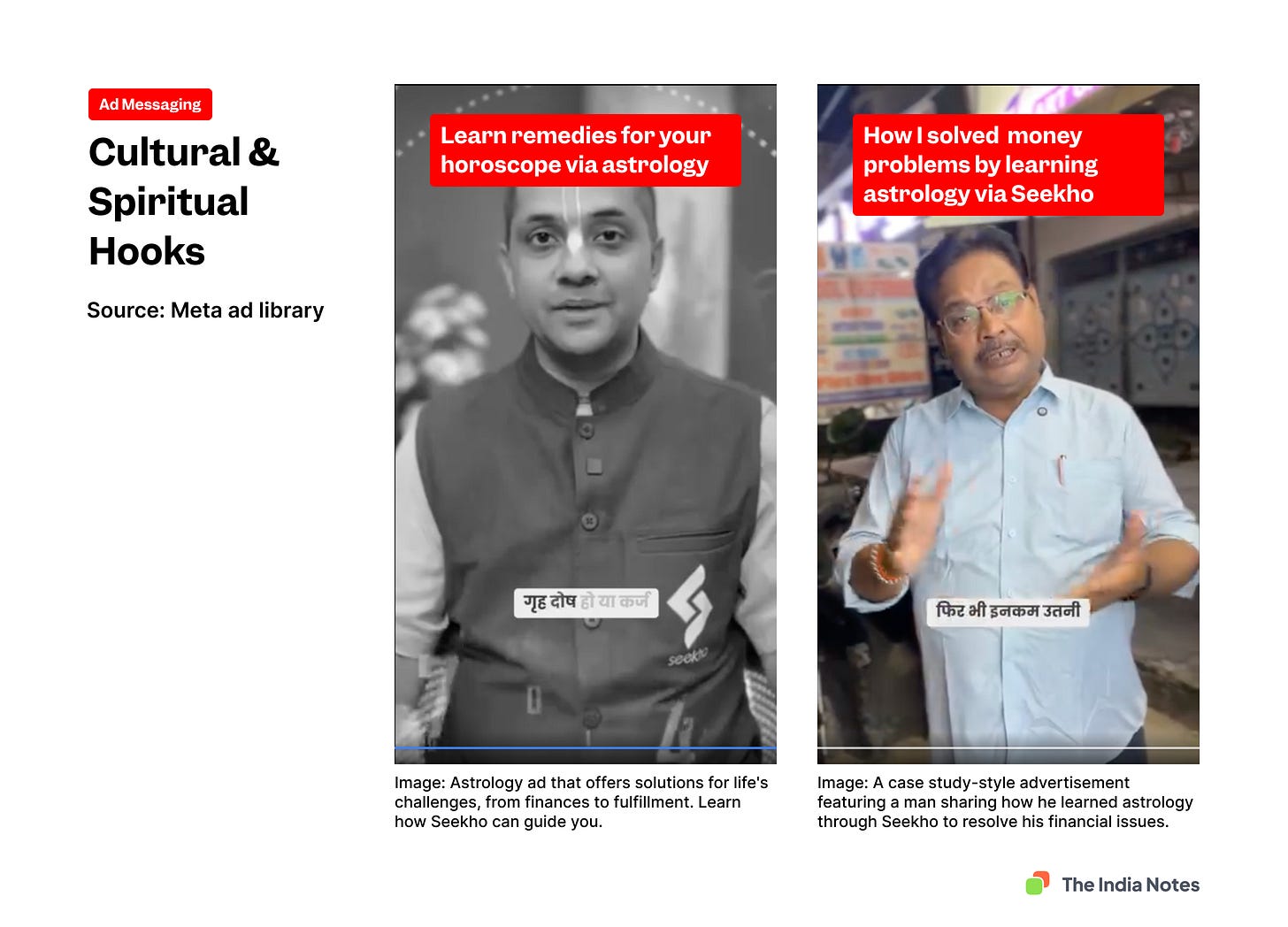

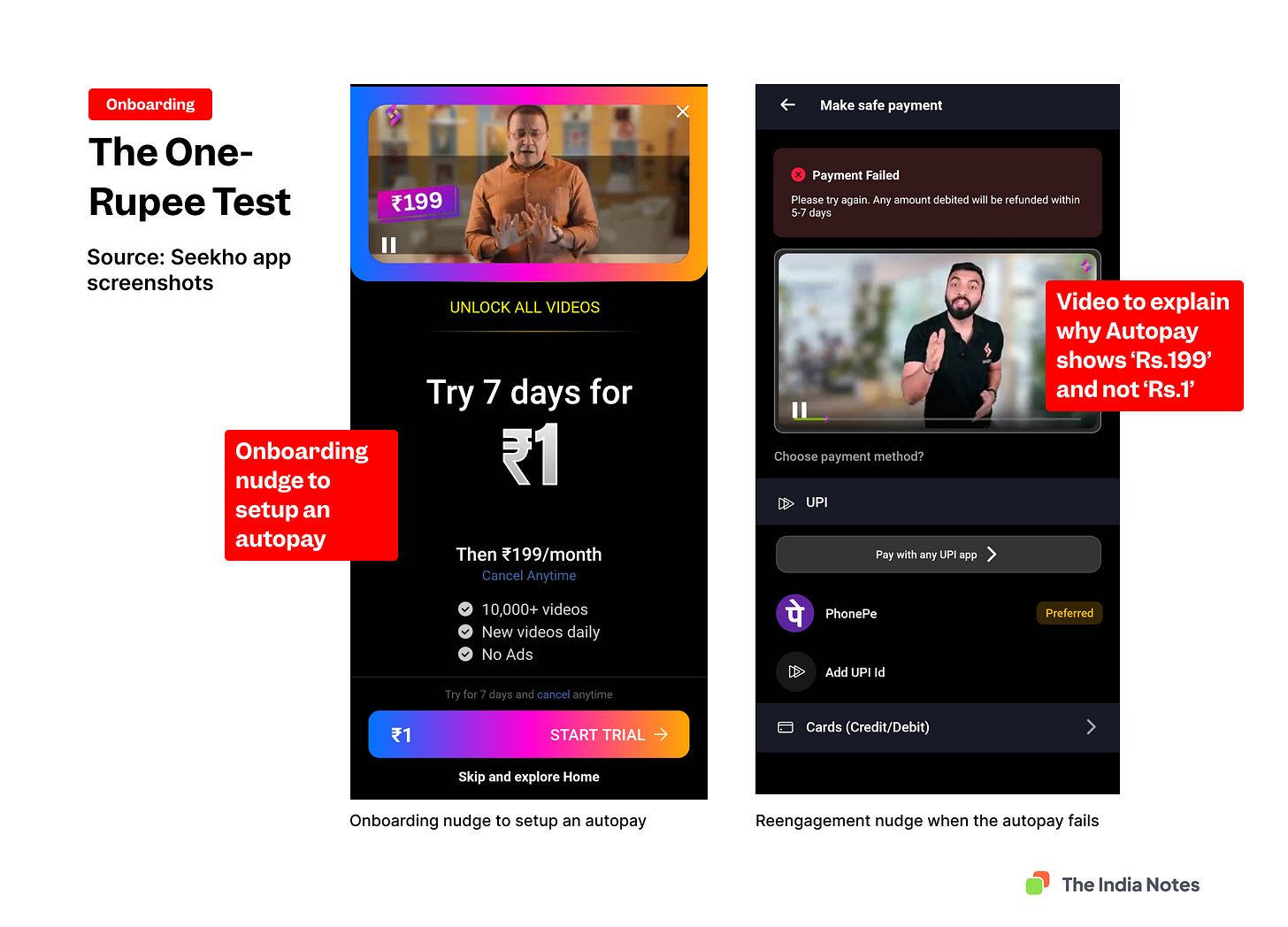
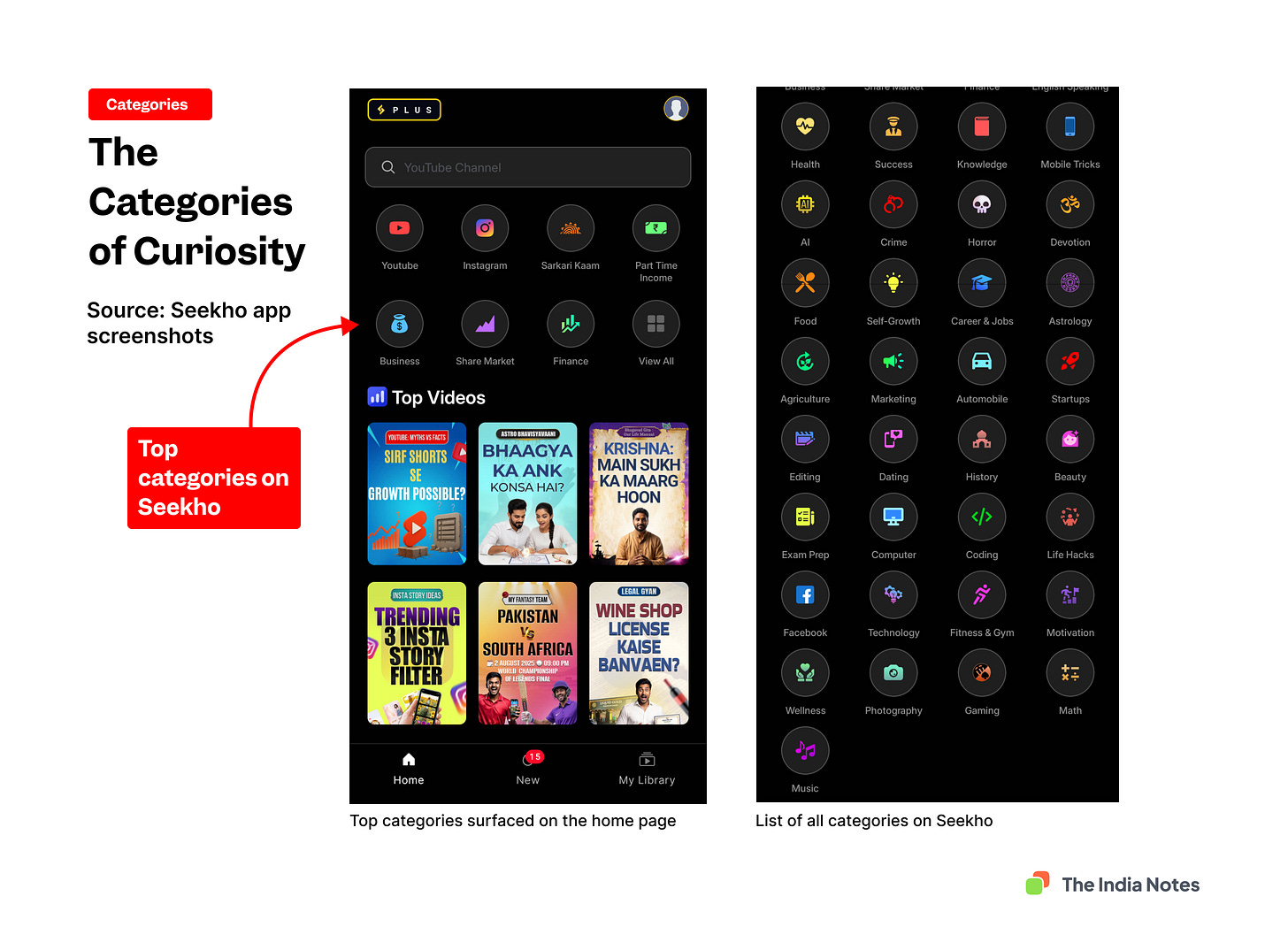
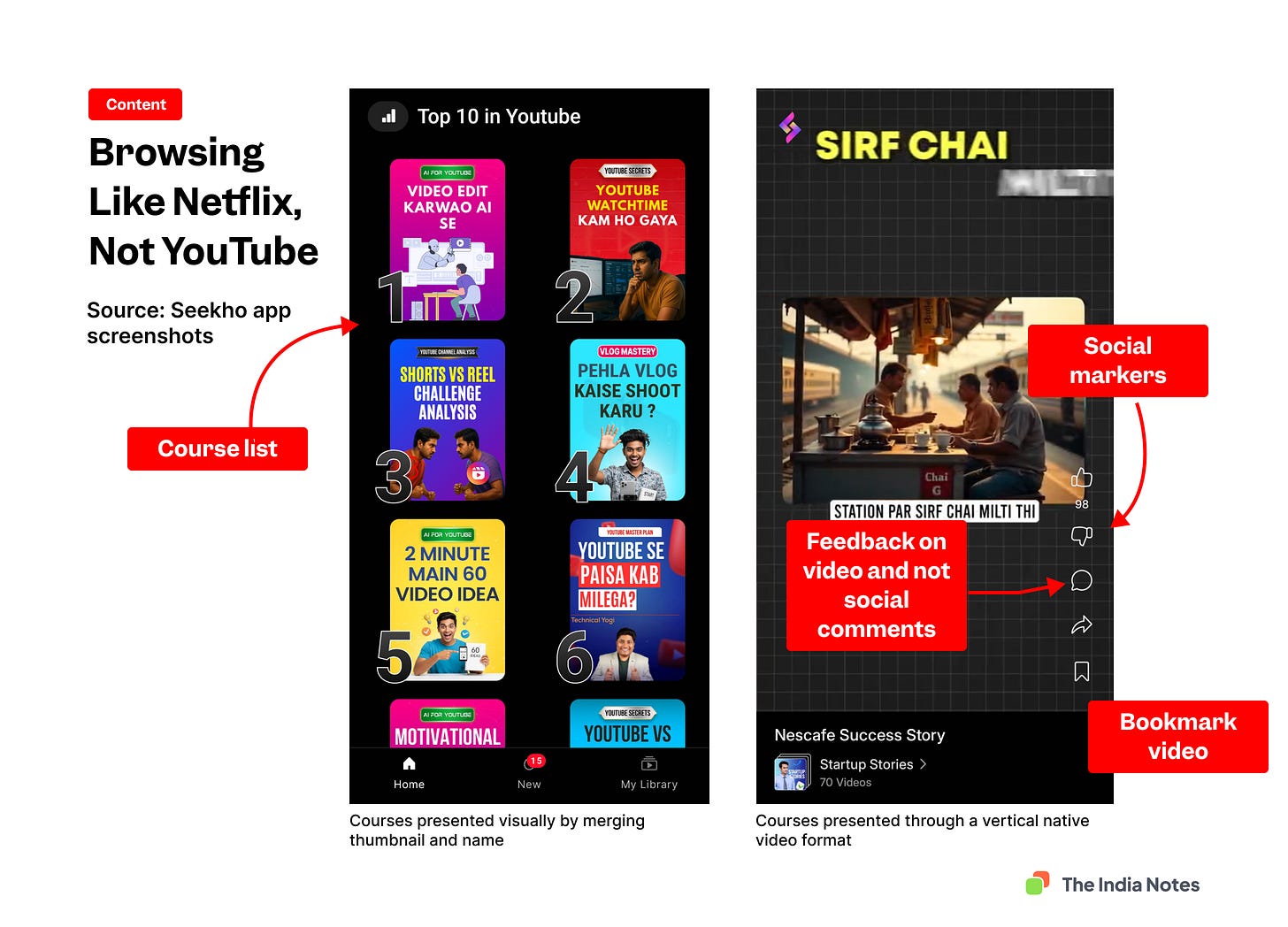
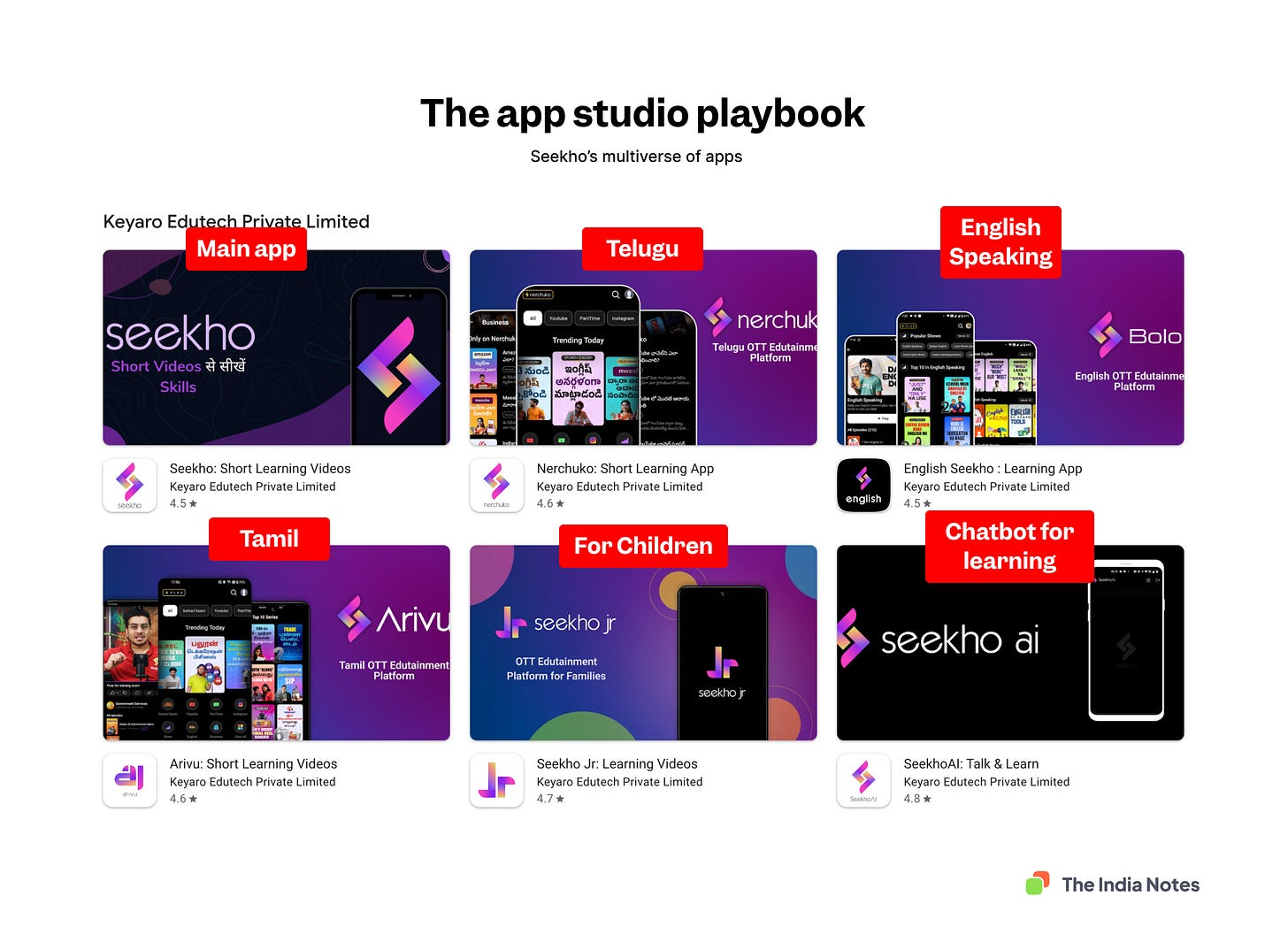
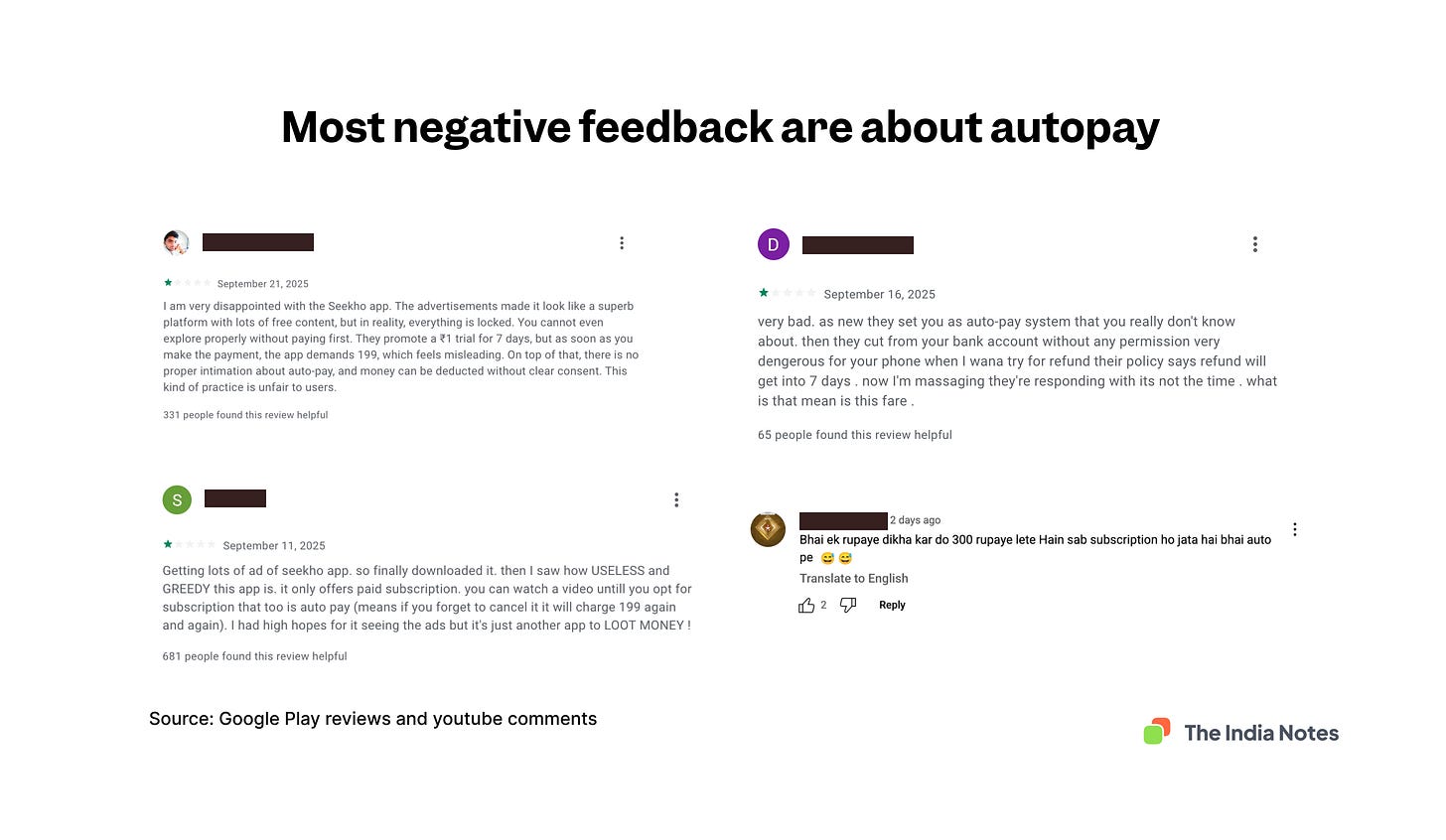
Seekho is a scam.
Revenue via fleecing gullible Bharat people via UPI auto-pay.
Then pumping that revenue into perf mktng machine.
PS: Disabled autopay for a resort staff recently. Seekho, Moj and KukuFM. Same playbook. Abusing UPI auto mandates.
only the low value content works. Astro, update card etc.